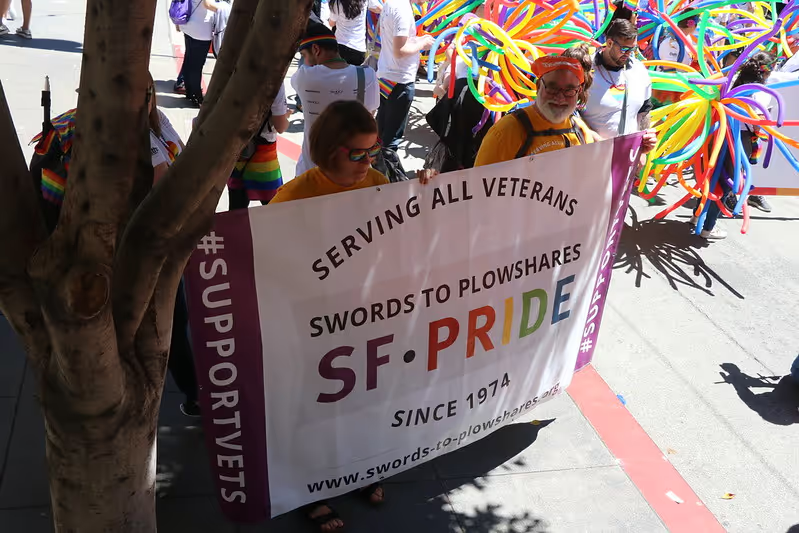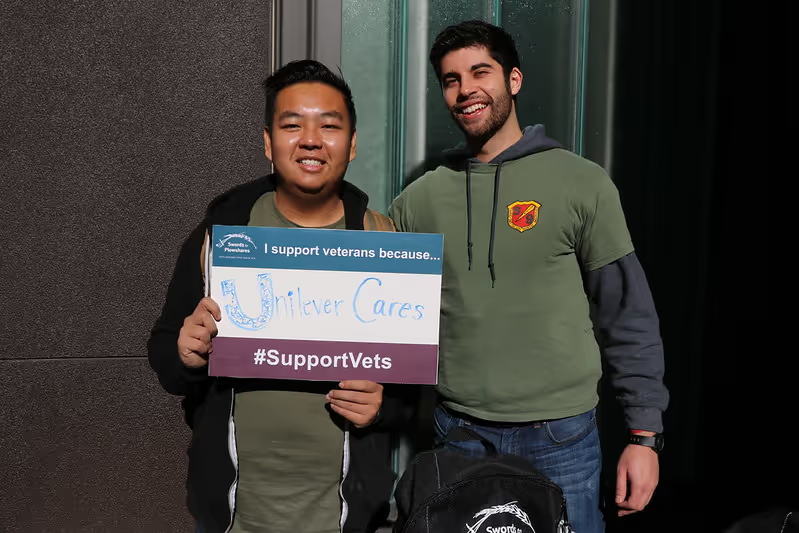Leaders of sustainable organizations apply results-based planning and management, are visionary and inspiring, and are able to adapt quickly to the changing pace of nonprofit work.
INSPIRE STAFF TO RECOGNIZE THE MISSION OF THEIR WORK
The majority of us work in nonprofits because we are tied to the mission of serving veterans, believe in the value of social service, and want to improve the lives of underserved communities. This dedication should be continuously inspired through leadership.
Program managers should remind staff how their day-to-day work is tied to their mission and enriches the lives of veterans, even if they are completing daunting paperwork or working in administration departments away from the veterans they serve. This will motivate staff to continue to work effectively. Managers are inclusive in decisions they make for the program and value the input of their staff. This also ties into cultural humility practices.
Listen to Amy Fairweather, Director of Policy for Swords to Plowshares, discuss the importance of revisiting your mission and vision.
ADAPT TO THE CONSTANT CHANGES OF NONPROFIT VETERAN SERVICES
Leaders in sustainable nonprofits are also adaptable. Although the scope of our work is typically the same year-to-year, funding variations can greatly change program operations. The landscape of veteran care is also constantly changing and leadership must stay informed on the ground of veteran needs. This can be a juggling act, but effective leaders need to keep the vision of the organization aligned with these changing mechanisms. This is why leaders must also be strategic and decisive when it comes to adapting their programs to meet the changing needs of those they serve.
RELY ON THE BOARD, DON’T JUST REPORT TO THEM
The qualities we have touched on should extend to the board of directors as well. Too often nonprofits are not taking full advantage of the ways in which the board can and should participate in fundraising and program planning. Some nonprofits prefer the board to be more hands-off, but they should still require the board to participate in ways that benefit the operations and funding of the organization.
- Make sure the board renews their commitment to the organization every year, especially during strategic planning, with specific benchmarks.
- Make sure new board members participate in onboarding. Any trainings for new staff on the organization, its values, and day-to-day operations should be provided to board members as well. Trainings on veteran culture and experiences is also helpful, especially if the board member is not a veteran. Trainings should also involve set expectations and commitments that the board must meet. The board chair or another member with a designated role should coordinate onboarding to new members; this is not something that staff should have to do.
- Operationalize the objectives you think the board should meet. For example, they should raise a certain amount of funding for the agency and bring in a certain number of new supporters every year.
- Make sure the board is doing outreach for the organization; talking to potential funders, advocates, and other stakeholders.
- Provide the board with talking points about the success of your organization. Give them data on your program and personal stories of the services you provide. Make sure they know how to articulate the needs on the ground and know how to advocate for resources.



.avif)




